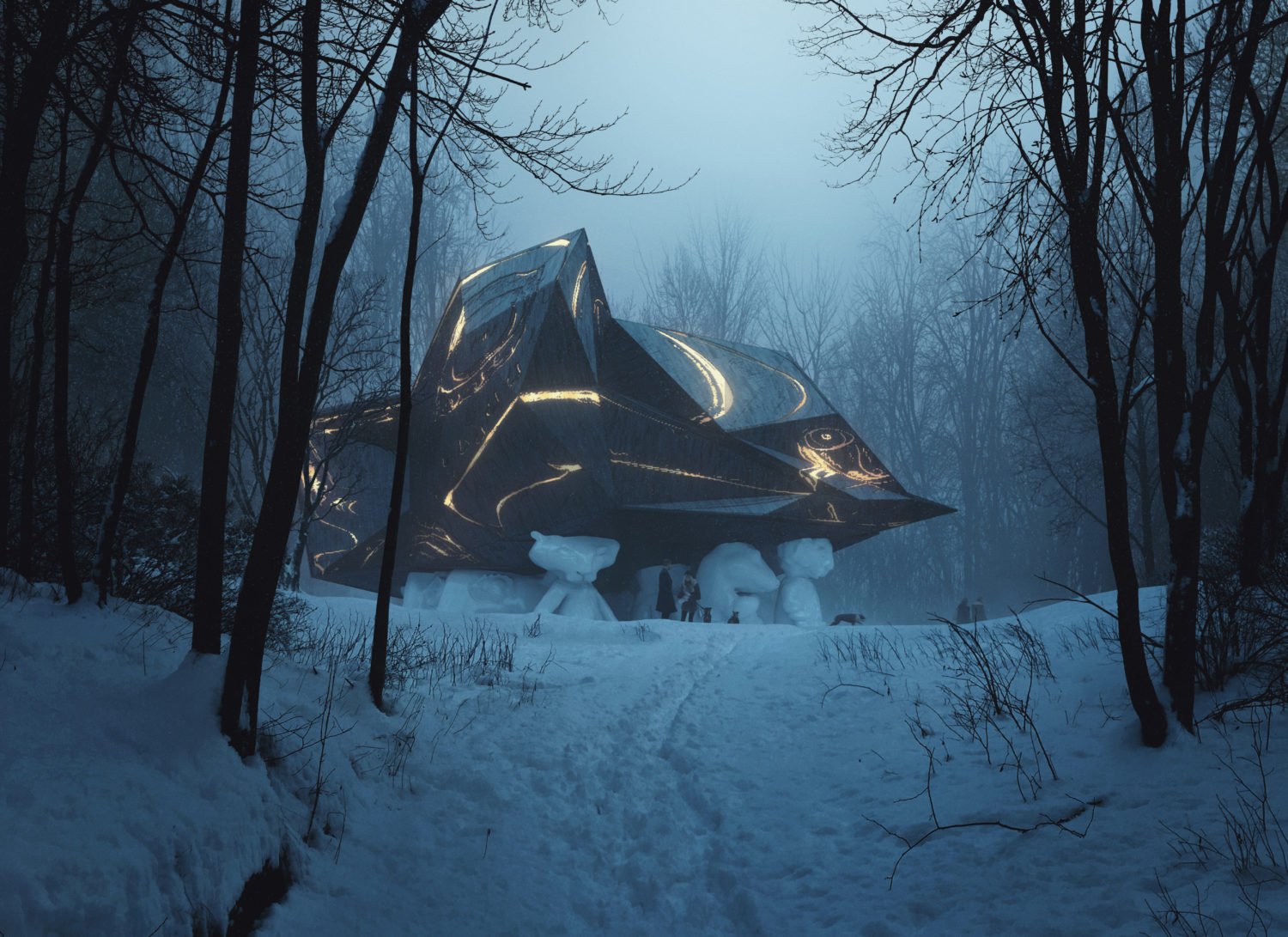
Bjarne Melgaard‘s quest to build a spacey home beside the site of Edvard Munch’s former home has hit another setback in Oslo. On August 20, the city council blocked the project, referring to it a “death house” in their statement.
Since the project began back in 2012, there has been heated resistance from the site’s neighbors, who are in fact artists themselves. The area is home to an artists’ colony with over 40 residents.
Norwegian photographer Per Maning called Melgaard’s project “tone deaf,” saying that its construction would amount to an international scandal. Art historians and a local daycare center also voiced opposition to what some have called a “mausoleum.”
Munch, whose expressionist paintings are perhaps country’s greatest cultural export, died at his house on the site in 1944, after spending years living and working on the grounds and painting from the forested landscape. Oslo tore the late artist’s house down back in the 1960s.
For the project titled A House to Die In, Melgaard (who is currently based in New York City) enlisted the help of the acclaimed Olso architecture firm Snøhetta to construct a fantasy home that could double as a sculpture. The irregularly shaped residence, with carved exterior walls in burnt and carved oak, is as unconventional as the artist who plans to live in it.
A swimming pool and eating area within would overlap in wildly unconventional ways, while A House to Die In was to be propped up by white fantastical creatures in such a way as to appear to be floating above a pond. Melgaard had planned to live there with his parents until his own death (hence the name).
Snøhetta’s design for Bjarne Melgaard’s A House to Die In. Rendering by MIR.
“There is great opposition to new things in Norway,” said Melgaard in a text message to the Aftenposten newspaper, which first reported on the story. Melgaard vented that his opponents were a “gang of losers,” and though he ended up making some changes to the house, it was still not enough to appease the group.
According to the New York Times, Melgaard had previously suggested that the barrier to getting the project approved was in part due to homophobia. The foundations of a demolished building at the proposed site were once spray-painted with anti-gay graffiti.
Snøhetta’s project manager, Jenny Osuldsen, told artnet News that there is actually no truly final decision on A House to Die In yet. The Norwegian system for processing architectural projects requires a democratic process, she says, and Snøhetta maintains that the firm is still proceeding with the planned project.
The artist said he was not surprised about the decision. artnet News contacted Melgaard to ask if there are plans to find a new site for the planned residence; he replied that he was not ready to comment on the matter.
Bjarne Melgaard in 2013. Photo courtesy of Tony Cox.
“Preserving an open, green area (at Ekely) is important for the people living there, and it’s also important to take care of the green lungs we have in the city,” Hanna Marcussen, a Greens Party politician in charge of Oslo’s urban development, said to Norwegian broadcaster NRK after the decision was announced.
This house’s saga is not the first time the country’s two most famous artists have had their legacies clash. A dual exhibition in 2015 at the Oslo Munch museum, titled “Melgaard + Munch,” received a flurry of complaints due its sexual overtones. Munch’s descendants claimed Melgaard was degrading Munch, and a police complaint was filed against Melgaard’s work All Gym Queens Deserve to Die for allegedly sexualizing children, though the charges were dropped. The Munch museum strongly defended the exhibition and some pointed out that Munch himself was also a provocateur in his time.